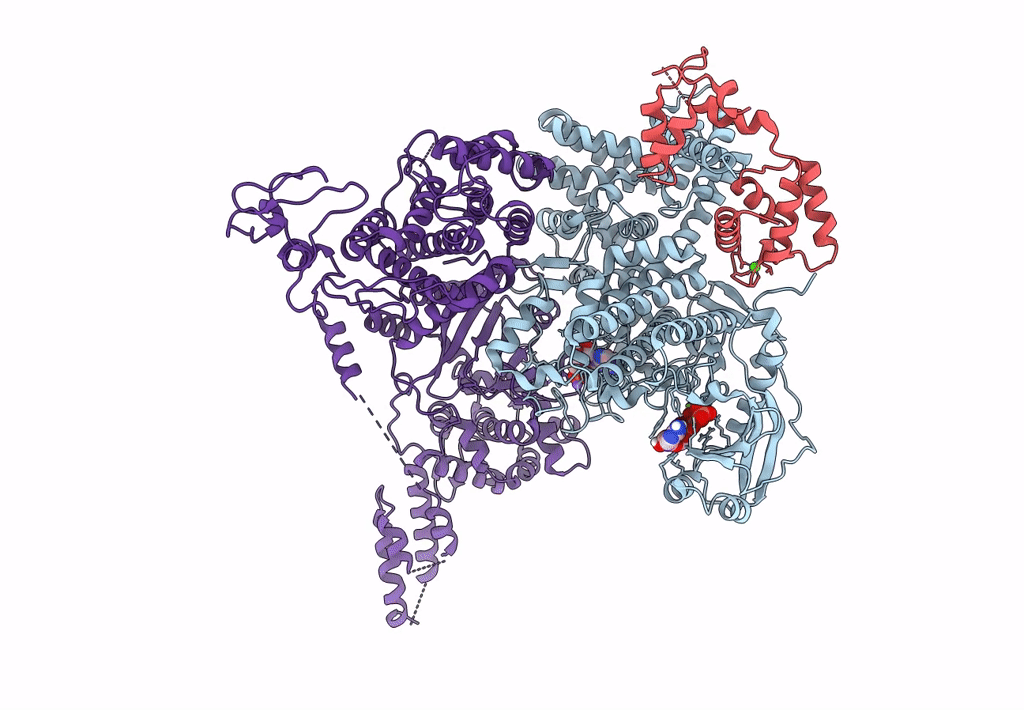
Deposition Date
2021-04-17
Release Date
2021-08-18
Last Version Date
2025-05-21
Entry Detail
PDB ID:
7MIS
Keywords:
Title:
Cryo-EM structure of SidJ-SdeC-CaM reaction intermediate complex
Biological Source:
Source Organism:
Legionella pneumophila (Taxon ID: 446)
Homo sapiens (Taxon ID: 9606)
Homo sapiens (Taxon ID: 9606)
Host Organism:
Method Details:
Experimental Method:
Resolution:
2.80 Å
Aggregation State:
PARTICLE
Reconstruction Method:
SINGLE PARTICLE


